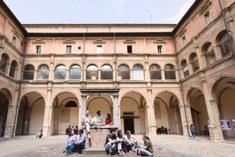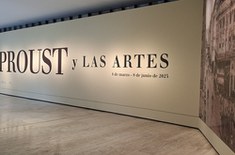Euclid’s scrutiny of the Universe began

Photo: : ESA – CC BY-SA 3.0 IGO
The Euclid space telescope has officially begun its Universe survey in search of dark matter. Over the next six years, it will observe billions of galaxies, across ten billion years of the cosmic history.
Built and managed by the European Space Agency (ESA), Euclid was created with the contribution of NASA and in collaboration with Italian Space Agency (ASI), the Italian National Institute for Astrophysics (INAF), the Italian National Institute for Nuclear Physics (INFN), and several Italian universities, including the University of Bologna.
One of its strengths is its ability to observe a vast area of the sky in one shot, a crucial aspect for a mission that aims at mapping more than a third of the sky in six years. The observation mode used is the “step-and-stare”. Euclid will observe an area of the sky for about 70 minutes, producing images and spectra, and then move to the next area within a few minutes. This operation will be repeated more than 40,000 times during the entire mission.
This monumental effort will make it possible to achieve one of the Euclid’s main objectives: to measure the shape of billions of galaxies with unprecedented detail over billions of years of cosmic history, providing a three-dimensional view of the distribution of dark matter in the Universe.
However, not everything went smoothly. Immediately after activating the instruments for the first time, the Euclid team realised that the entire survey had to be redesigned. This was due to a small amount of unwanted sunlight reaching Euclid’s visible instrument (VIS) at specific
angles, even though the sun shield of the spacecraft (located on the rear) was facing the Sun.
This marked the beginning of an in-depth analysis to find a solution. The team of scientists managed to solve the problem by identifying a narrower rotation angle, so that the sun shield is not directly facing the Sun. However, this was only a partial solution, as with this new arrangement some parts of the sky could not be reached from anywhere in the orbit of Euclid, which is 1.5 million kilometres from Earth.
The planned observation programme had to be redesigned from the ground up. It was a massive puzzle made of more than 40,000 shots. Only after a long analysis, scientists found a viable alternative involving more overlapping between adjacent observations. While the overall efficiency of the mission is slightly lower, the objective to cover all necessary sky areas is now assured.
The University of Bologna, with its Department of Physics and Astronomy “Augusto Righi” (DIFA), was one of the creators and founders of the mission that led to the development of Euclid. The journey began in 2007 with the SPACE (Spectroscopic All-sky Cosmic Explorer) project, presented by an international team led by professor Cimatti as part of ESA's Cosmic Vision 2015-2025 space programme.






